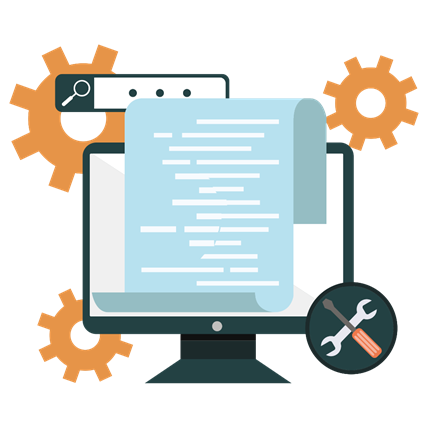Website Maintenance Guide To Speed Up Your Website

There is no excuse for a slow website in today’s times. People expect sites to load within the blink of an eye regardless of the type of content the page needs to display. There was a time when waiting for a site to load was acceptable – not anymore. If a site fails to load within three seconds, nearly 40% of visitors abandon it (source). In fact, around 47% of online users expect you to ensure that your site loads within two seconds. Website speed is important for the SEO of the site too. Google considers the page loading time as a parameter while determining the page rank of your site in the search engine results page. Hence, ensuring a fast-loading website is essential for the growth and success of your site and business. Today, we will share a website maintenance guide to help you speed up your website.
Before you start working on the site’s speed, it is important to know its current loading speed, right? Here are some tools that can help – Pingdom, Page Speed Insights, YSlow, etc.
There are many ways to enhance the speed of your website. Before we talk about website maintenance for speed optimization, it is important to remember that the hosting plan and the provider play a crucial role in the performance and speed of your site. Hence, ensure that you opt for a hosting plan like Cloud Hosting that is designed to improve site speeds and a provider that deploys the best hardware and software to ensure optimum site performance. Also, use a Content Delivery Network (CDN) and a caching solution to boost the speed.
Website Maintenance Guide to Speed Up Your Website
1. Uninstall unnecessary software and plugins
Every software and plugin that you install requires resources. You might have installed some software six months ago because you needed it but don’t need it anymore. However, it is still lying on the server, eating up your resources. Declutter it and remove anything that you don’t need.
2. Reduce HTTP requests
Every single file that your site needs to load is requested from the server using the HTTP protocol. So, if you have several HTML, CSS, and JavaScript files, then the site will take longer to load since there will be multiple HTTP requests. Hence, you should reduce these requests by following these tips:
- Combining files
- Reducing the number of elements on a page without compromising on its quality
- Using caching
- Replacing images with CSS
- Reducing redirects
3. HTTP Keep-Alive
This is an option that allows you to keep a single connection open between your server and the user’s browser for multiple file requests. Without it, the browser needs to ask permission from the server for every single request that loads the server resulting in a slow-loading website.
4. Minification
Every website has several CSS and JavaScript files. Minification is a process of removing unwanted and redundant characters, variables, etc. to optimize the speed of the server.
5. Image Optimization
Images, especially photographs, can be really heavy to load if they are not optimized for websites. Image optimization is about reducing the size of the images without compromising on their quality. This can help improve the speed of the website, especially if the site uses a lot of high-resolution images.
6. Broken Links
If your website has broken links in image URLs, JavaScript, or CSS, then the site’s speed can get affected. Hence, it is important to fix them as soon as they are found and check your site regularly for any broken links.
7. Database optimization
If you are using a CMS like WordPress, then your site relies heavily on database usage. Over time, the database can get filled with unnecessary data like pingbacks, track-backs, trash items, unapproved comments, etc. that can hamper the speed of your site. Hence, you must clean your database regularly.
Summing Up
There are many other ways to boost the speed of your website. However, the ones mentioned above are the more effective ones. We hope that this guide helps you speed up your website. Good Luck!
